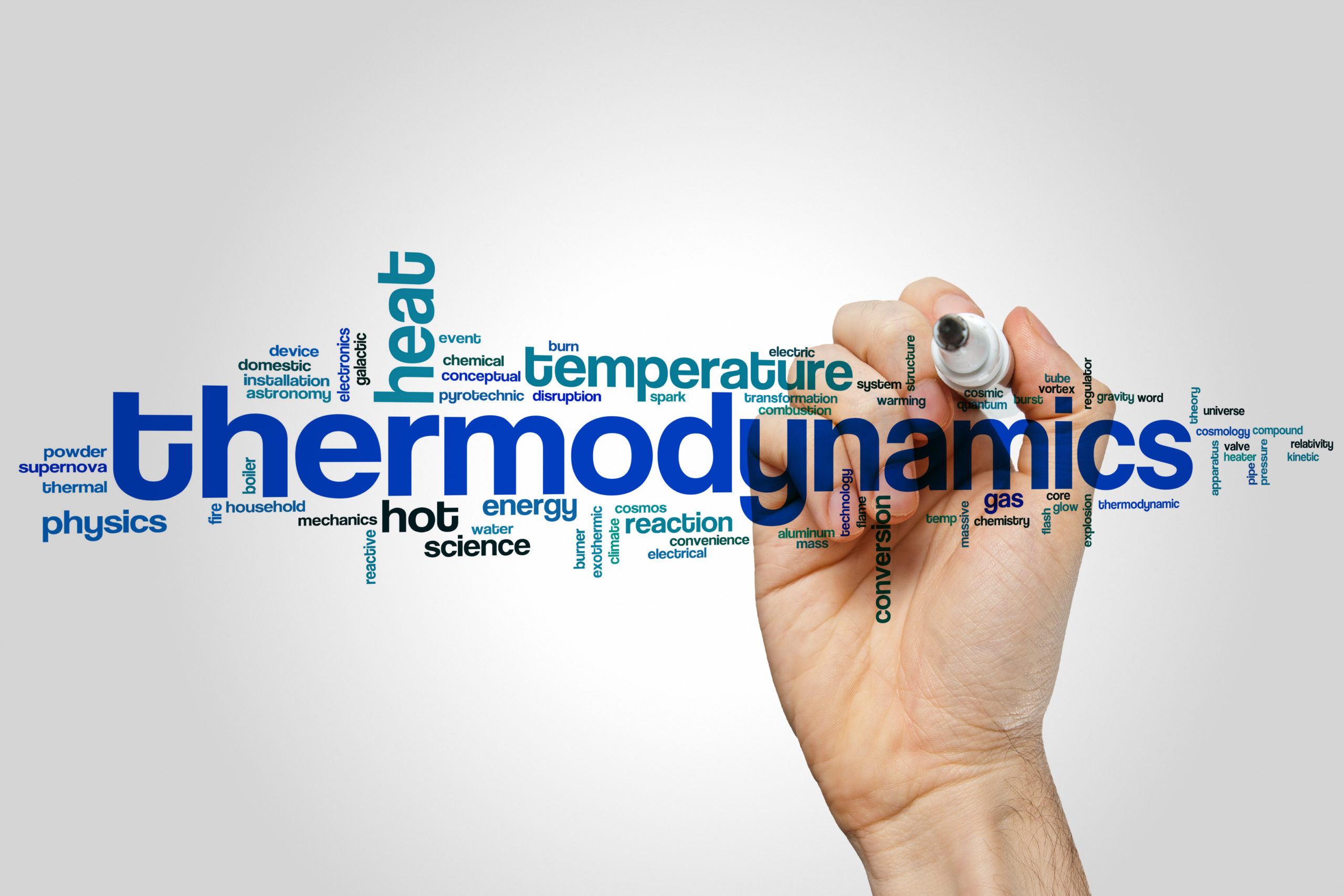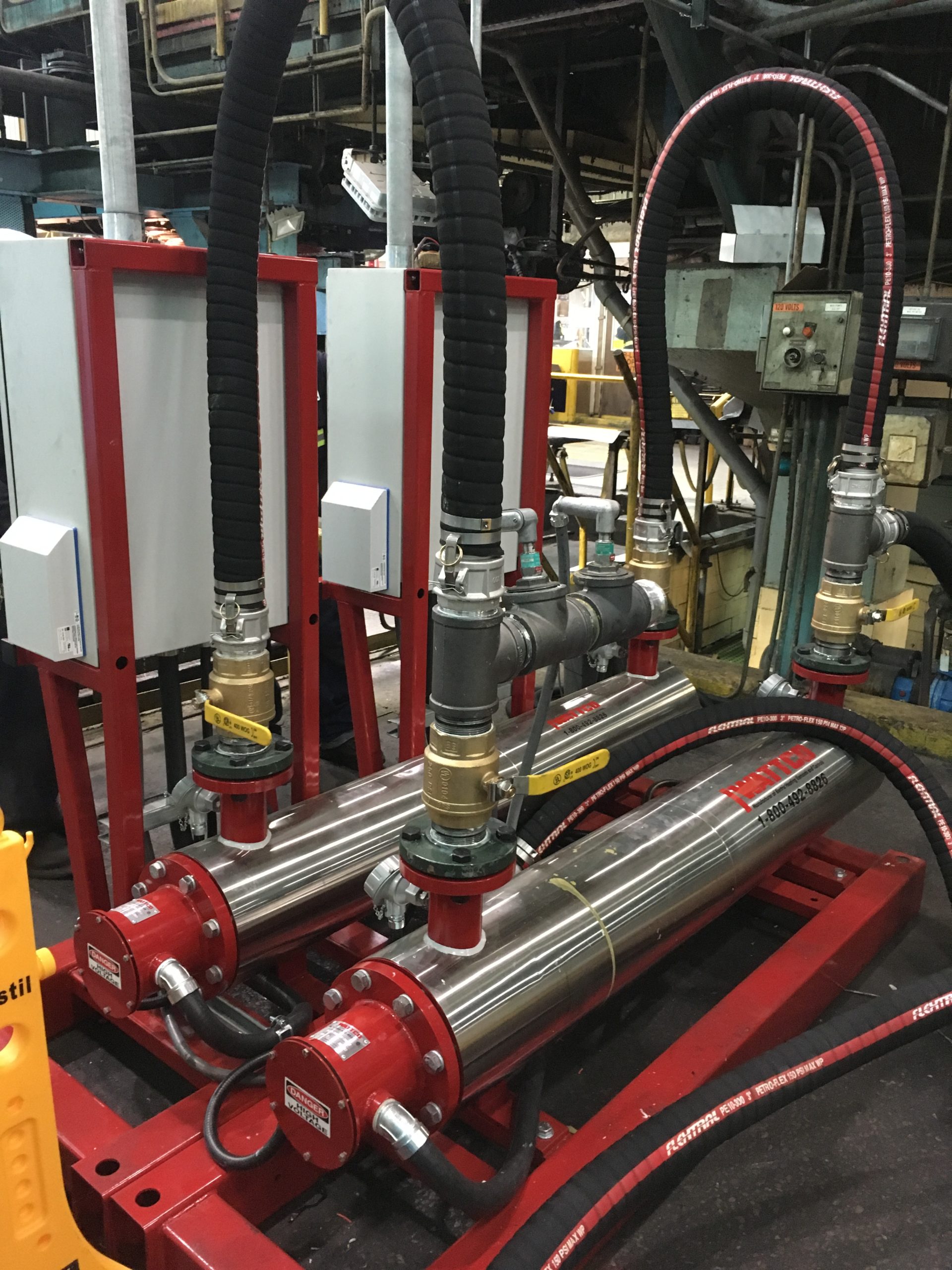APPLIED THERMODYNAMICS – Basics and Applications
Professor Alina Adriana Minea, Technical University “Gheorghe Asachi” from Iasi
Bd. D. Mangeron no.63, Iasi, 700050, Romania
E-mail: aminea@tuiasi.ro
 Let us begin with a short introduction to thermodynamics. Firstly, thermodynamics is the science of the relationship between heat, work, temperature, and energy. In broader terms, thermodynamics is the transfer of energy from one part to another. As well as from one form to another.
Let us begin with a short introduction to thermodynamics. Firstly, thermodynamics is the science of the relationship between heat, work, temperature, and energy. In broader terms, thermodynamics is the transfer of energy from one part to another. As well as from one form to another.
The key concept behind all these phenomena is that heat is a form of energy corresponding to a definite amount of mechanical work.
Thermodynamics is governed by several basic laws, identified as:
The zeroth law of thermodynamics
When two systems are each in thermal equilibrium with a third system, the first two systems are in thermal equilibrium with each other. This property makes it meaningful to use thermometers as the “third system” and to define a temperature scale.
The first law of thermodynamics
AKA, the law of conservation of energy. The modification in a system’s internal energy is equal to the difference between heat added to the system from its surroundings and work done by the system on its ambiances.
The second law of thermodynamics
Heat does not flow spontaneously from a colder region to a hotter region. Or, equivalently, heat at a given temperature cannot be converted entirely into work. Consequently, the entropy of a closed system, or heat energy per unit temperature, increases over time toward some maximum value. Thus, all closed systems tend toward an equilibrium state in which entropy is at a maximum and no energy is available to do useful work.
The third law of thermodynamics
The entropy of a perfect crystal of an element in its most stable form tends to zero as the temperature approaches absolute zero. This allows the establishment of an absolute scale for entropy. From a statistical point of view, this determines the degree of randomness or disorder in a system.
Thermodynamics stands at the base of all heating processes with direct applications in industry and research in correspondent domains. In the last centuries, thermodynamics developed extremely rapidly especially in regard to the urgent need of optimizing the performances of most heating equipment. For example, steam engines and industrial heaters.
More exactly, the laws of thermodynamics give a complete description of all changes in the energy state of any system. As well as its ability to perform useful work on its surroundings.
Thermodynamics is both a branch of physics and engineering science.
Dimensions and Units
Dimensions can characterize any physical quantity. The arbitrary magnitudes assigned to the dimensions are called units. There are two types of dimensions, primary or fundamental and secondary or derived dimensions, as for example:
- Primary dimensions are: mass, m; length, L; time, t; temperature, T
- Secondary dimensions are the ones that are derivable from primary dimensions such as: velocity (m/s2), pressure (Pa = kg/m.s2).
Closed and Open Systems
A system is a quantity of matter or a region in space chosen for study. The mass or region outside the system is the surroundings.
A “boundary” is the real or imaginary surface that separates the system from its surroundings.
The boundaries of a system can be fixed or movable. Mathematically, the boundary has zero thickness, no mass, and no volume.
Closed system or control mass: consists of a fixed amount of mass, and no mass can cross its boundary. But, energy in the form of heat or work can cross the boundary, and the volume of a closed system does not have to be fixed.
Open system or control volume: is a properly selected region in space. It usually encloses a device that involves mass flow such as a compressor. Both mass and energy can cross the boundary of a control volume.
Isolated system: A closed system that does not communicate with the surroundings by any means.
Rigid system: A closed system that communicates with the surroundings by heat only.
Adiabatic system: A closed or open system that does not exchange energy with the surroundings by heat.
Processes and Cycles
Any change a system undergoes from one equilibrium state to another is a process. The series of states through which a system passes during a process is a path.
The comprehensive generality of the constraints imposed by the laws of thermodynamics makes the number of potential applications so large that it is impossible to present here every possible formula that might come into use. Considering these, practitioners in the thermodynamic area require skills in mathematical manipulations, including partial derivatives, and in completely understanding their physical meaning.
One of the great strengths of classical thermodynamics is that the predictions for the direction of spontaneous change are completely independent of the microscopic structure of matter. This also represents a limitation in that no predictions are made about the rate at which a system approaches equilibrium. In fact, the rate can be exceedingly slow, such as the spontaneous transition of diamonds into graphite. Statistical thermodynamics provides information on the rates of processes. As well as important insights into the statistical nature of entropy and the second law of thermodynamics.
Applied thermodynamics to immersion heaters
 An immersion heater is a device installed in a tank or container to heat a liquid. The installation can be over-the-side, flanged, or threaded.
An immersion heater is a device installed in a tank or container to heat a liquid. The installation can be over-the-side, flanged, or threaded.
Immersion heaters use direct immersion in different fluids for faster more accurate heating. For example; water, oils, viscous materials, solvents, process solutions, molten materials, and gases. By generating all the heat within the liquid or process, these heaters are close to 100 % energy efficient. Many designs are available and offered in numerous sizes, kilowatt ratings and voltages, and with a variety of termination connections, sheath materials, and accessories.
Immersion process heaters have grown a richly deserved reputation for their adaptability in all industries. They can attain an inconceivable variety of functions in many industrial applications. For example: chemicals, food and agriculture, melting, fluid heating. Actually, immersion heaters commonly replace fossil fuel fluid heaters, infrared, microwave, resistance heaters, reactors, and other types of furnaces.
There are many types of immersion heaters available on the market, depending on their specific application. The basic heating process relies on improving convection in different fluids by applying a heating source inside of the fluid.
The direct immersion method is energy efficient and well suited for many applications.
Concluding, thermodynamics stands at the base of all industrial processes, especially in medium to large temperature range processes. Thus, the fundamentals of thermodynamics are extremely relevant in moving towards a better world, through enhancement in the overall performance of any plant, equipment, as well as their whole design.
As a final remark, this author affirms that any modern engineer, apart from being a good professional, has to use the concept of thermodynamics to scrutinize and reinvent things that are also intended for human safety and comfort.
References:
https://www.britannica.com/science/thermodynamics/Thermodynamic-equilibrium
https://www.electrical4u.com/engineering-thermodynamics/
https://www.intechopen.com/books/thermodynamics-fundamentals-and-its-application-in-science
Biography
 Alina Adriana Minea is full professor at Technical University Gheorghe Asachi from Iasi, Romania and Director of Coordination Council of Doctoral School in Materials Engineering and has published over 140 articles and authored or co-authored 17 books, most of them in the field of heat transfer. Her research interests include heat transfer in industrial equipment, based on modifying heat chamber geometry and improving energy consumption, as well as nanofluids as heat transfer enhancement technique. She currently serves as a member of the regional editorial board of journal Thermal Sciences, as Associate Editor for Journal of Thermal Science (Springer) and International Journal of Thermophysics (Springer), as Editor for Journal of thermal science and engineering progress (Elsevier), as Editor-in Chief for IREHEAT journal. In 2013 and 2016 she received the prize for Best Reviewer from Applied Energy, Elsevier and in 2016 and 2019 the Best Researcher from Technical University Gh. Asachi from Iasi.
Alina Adriana Minea is full professor at Technical University Gheorghe Asachi from Iasi, Romania and Director of Coordination Council of Doctoral School in Materials Engineering and has published over 140 articles and authored or co-authored 17 books, most of them in the field of heat transfer. Her research interests include heat transfer in industrial equipment, based on modifying heat chamber geometry and improving energy consumption, as well as nanofluids as heat transfer enhancement technique. She currently serves as a member of the regional editorial board of journal Thermal Sciences, as Associate Editor for Journal of Thermal Science (Springer) and International Journal of Thermophysics (Springer), as Editor for Journal of thermal science and engineering progress (Elsevier), as Editor-in Chief for IREHEAT journal. In 2013 and 2016 she received the prize for Best Reviewer from Applied Energy, Elsevier and in 2016 and 2019 the Best Researcher from Technical University Gh. Asachi from Iasi.
Her major current projects are ‘Nanouptake COST action.’ and “NanoRound”. Her current work is based on numerical and experimental studies in developing new heat transfer fluids.
